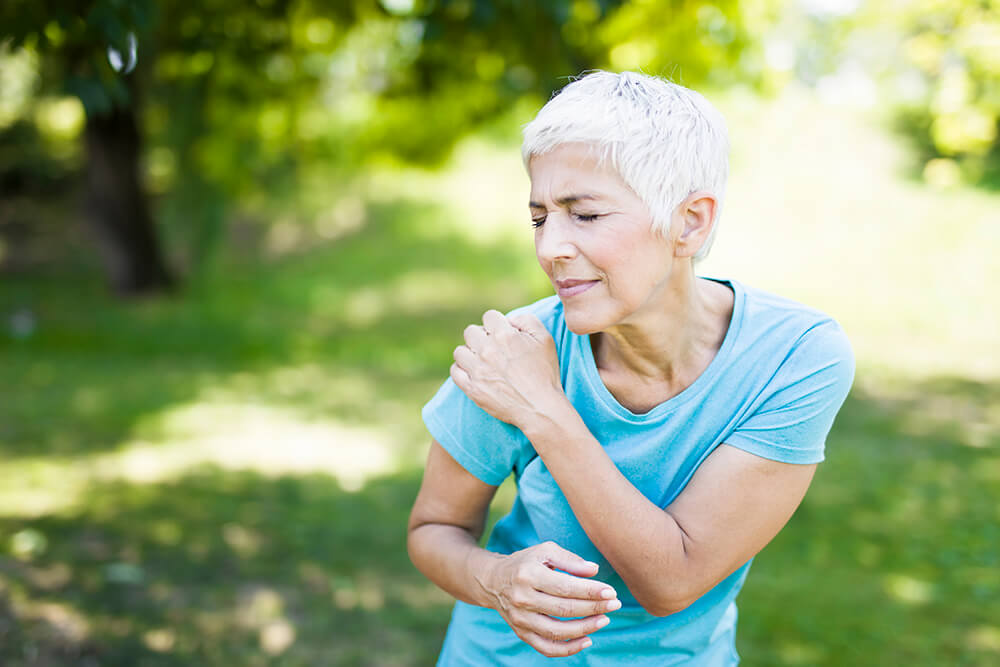Your shoulder is a complex joint made up of several bones, tendons and ligaments. When your shoulder suffers a sudden blow or is overstretched over time, you could tear your soft tissue surrounding the joint. Two common injuries that can occur in the shoulder are rotator cuff tears and labrum tears. Both shoulder injuries can cause severe pain and limited range of motion in the shoulder.
Whether you’re experiencing shoulder pain or have been diagnosed with a shoulder injury, it’s important to determine the source of your pain to pinpoint the complications surrounding it. A physical therapist can help you identify if you have a rotator cuff tear or labrum tear based on your symptoms. With this knowledge, you will be able to better manage your shoulder pain and inflammation through a customized treatment plan.
What is a labrum tear?
Your labrum is a cartilage structure that surrounds your shoulder joint and provides stability. It also serves as an attachment site for several ligaments, tendons and muscles in your shoulder.
When your labrum is overstretched, it can rip to varying degrees. A labrum tear can happen in many different ways, including when the shoulder joint is forced out of its normal position in its socket, such as during a dislocation. You can also tear your labrum after repetitive overhead arm movements, like throwing a ball or playing tennis, and repeatedly carrying heavy objects. Repetitive movements can irritate your labrum and cause it to inflame and rip over time.
Symptoms of a labrum tear can include the following:
- Pain in your shoulder, especially when lifting or rotating the arm.
- A popping or clicking sensation in the shoulder.
- Weakness in the arm.
- Limited range of motion.
- Instability in the shoulder.
Diagnosis of a labrum tear typically involves a physical examination, and imaging tests such as an X-ray, MRI or an arthrogram (an X-ray with a contrast dye to highlight the labrum) can help determine the extent of your labrum damage.
What is a rotator cuff tear?
The rotator cuff is a group of four muscles and tendons that work together to help raise and rotate your arm. The four muscles that make up the rotator cuff are the supraspinatus, infraspinatus, teres minor and subscapularis muscles.
A rotator cuff tear refers to an injury to the tendons and muscles that attach your upper arm bone (humerus) to the shoulder blade (scapula). Rotator cuff tears can happen due to several reasons, including repetitive overhead arm movements like throwing a ball or playing tennis, and trauma or injury.
Symptoms of a rotator cuff tear may include:
- Pain in the shoulder, particularly when reaching overhead or behind the back.
- Muscle weakness in the shoulder, making it difficult to lift or rotate the arm.
- Cracking or popping sounds when moving the shoulder.
- Tenderness in the shoulder, especially when pressing on the rotator cuff tendons.
- Stiffness or limited range of motion in the shoulder.
- A visible lump or bump on the shoulder.
- Discoloration or redness at the site of injury.
It’s important to note that some rotator cuff tears may occur as a result of aging as your tissue degenerates over time. Your doctor can properly pinpoint the cause of your shoulder pain by performing a physical examination and imaging tests, such as an X-ray and MRI.
What is the treatment for rotator cuff and labrum tear symptoms?
Treatment for rotator cuff and labrum tear symptoms may include a combination of physical therapy, nonsteroidal anti-inflammatory drugs (NSAIDs), and corticosteroid injections. The type of treatment will depend on the severity of your injury, your medical history, and your individual needs and goals.
Physical therapists can play an important role in helping patients manage their labrum and rotator cuff tear symptoms by helping them recover and regain function in their shoulders. Here are a few things physical therapists may implement to boost your recovery:
- Stretching and strengthening — Physical therapists can introduce you to a stretching and strengthening program to help improve the flexibility, range of motion, and muscle strength in your shoulder. For example, your therapist may prescribe stabilization exercises that strengthen the muscles responsible for moving the shoulder blade. This can help reduce pain and other symptoms of your rotator cuff or labrum tear, quicken the healing process, and prevent the recurrence of injury.
- Education on posture and body mechanics — Physical therapists can teach you proper posture and body mechanics to help reduce the stress you place on your shoulder when slouching or bending down. Knowing proper body mechanics can help you prevent further injury and manage your rotator cuff tear and labrum tear symptom
- Dry needling or manual therapy — Physical therapists may use dry needling or manual therapy techniques to ease pain, reduce muscle tension and related symptoms, and improve mobility in your torn rotator cuff or labrum.
- Education and home exercise program — Physical therapists can teach you how to properly care for your torn rotator cuff or torn labrum at home, prescribing you an exercise program that can continue to target your symptoms after your physical therapy sessions have ended.
Border Therapy Services can help ease your labrum tear and rotator cuff tear symptoms
If you’ve experienced a shoulder injury recently, your labrum or rotator cuff may be torn. It’s important for you to determine what shoulder injury you’ve experienced so that you can start treatment as soon as possible.
A physical therapist can help you pinpoint the cause of your shoulder pain and design an exercise program with the goal of boosting your healing process. Our team at Border Therapy Services is here to help you restore your shoulder mobility and strength.
Contact our team today for more information or to schedule an initial appointment.
